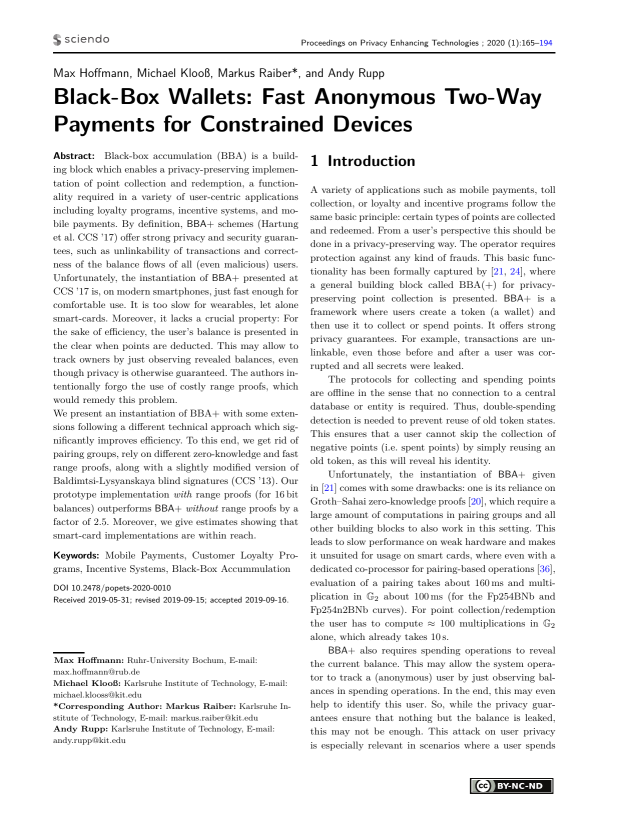Black-Box Wallets: Fast Anonymous Two-Way Payments for Constrained Devices
Authors: Max Hoffmann (Ruhr-University Bochum), Michael Klooß (Karlsruhe Institute of Technology), Markus Raiber (Karlsruhe Institute of Technology), Andy Rupp (Karlsruhe Institute of Technology)
Volume: 2020
Issue: 1
Pages: 165–194
DOI: https://doi.org/10.2478/popets-2020-0010
Abstract: Black-box accumulation (BBA) is a building block which enables a privacy-preserving implementation of point collection and redemption, a functionality required in a variety of user-centric applications including loyalty programs, incentive systems, and mobile payments. By definition, BBA+ schemes (Hartung et al. CCS ’17) offer strong privacy and security guarantees, such as unlinkability of transactions and correctness of the balance flows of all (even malicious) users. Unfortunately, the instantiation of BBA+ presented at CCS ’17 is, on modern smartphones, just fast enough for comfortable use. It is too slow for wearables, let alone smart-cards. Moreover, it lacks a crucial property: For the sake of efficiency, the user’s balance is presented in the clear when points are deducted. This may allow to track owners by just observing revealed balances, even though privacy is otherwise guaranteed. The authors intentionally forgo the use of costly range proofs, which would remedy this problem. We present an instantiation of BBA+ with some extensions following a different technical approach which significantly improves efficiency. To this end, we get rid of pairing groups, rely on different zero-knowledge and fast range proofs, along with a slightly modified version of Baldimtsi-Lysyanskaya blind signatures (CCS ’13). Our prototype implementation with range proofs (for 16 bit balances) outperforms BBA+ without range proofs by a factor of 2.5. Moreover, we give estimates showing that smart-card implementations are within reach.
Keywords: Mobile Payments, Customer Loyalty Programs, Incentive Systems, Black-Box Accummulation
Copyright in PoPETs articles are held by their authors. This article is published under a Creative Commons Attribution-NonCommercial-NoDerivs 3.0 license.

